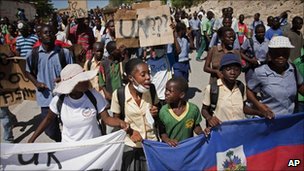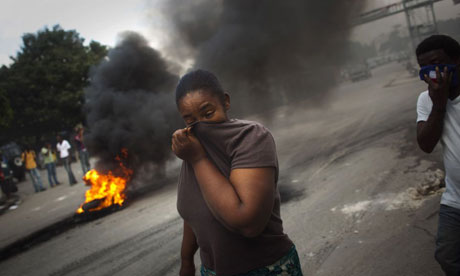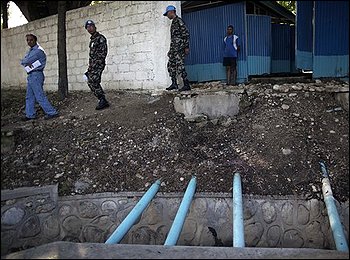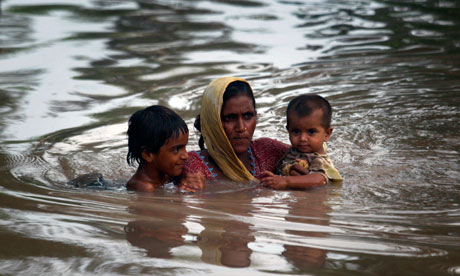– Parents watch children take their last breaths, as cholera explodes in Yemen
* * *
PayPal: Donate in USD
PayPal: Donate in EUR
PayPal: Donate in GBP
The man who trades freedom for security does not deserve nor will he ever receive either. – Benjamin Franklin
H/t reader squodgy:
“Who are they trying to kid? The US have armed & trained the puppets of the sick hypocritical bin Saud family under Bush’s & Clinton.
Anyway, thankyou America for this latest bit of news…”
– Cholera infections in Yemen climb to more than 1,400 within weeks: WHO:
The World Health Organization (WHO) says the number of suspected cholera cases in Yemen has soared to 1,410 ever since the outbreak of the infectious disease was declared in the conflict-plagued impoverished Arab country three weeks ago.
Tarik Jasarevic, a spokesperson for the United Nations health agency, told a news briefing in the Swiss city of Geneva on Friday that 1,410 people have been identified with cholera-like symptoms in ten provinces of Yemen, and the epidemic is concentrated in Ta’izz, Aden, Lahij, Hudaydah and Sana’a.
Cholera is an acute intestinal infection caused by ingestion of food or water contaminated with the bacterium Vibrio cholerae. It is a fast-developing infection that causes diarrhea, which can quickly lead to severe dehydration and death if treatment is not promptly provided.
Yemen’s water and sewerage systems besides much of its health infrastructure have been destroyed in the wake of Saudi Arabia’s 18-month-long aerial bombardment campaign against the country.
Read moreCholera infections in Yemen climb to more than 1,400 within weeks: WHO
– Six Years & 1000s Of Deaths Later, UN Admits It Imported Cholera To Haiti:
Poor Haiti.
It is not enough to be the poorest country in the world and to be in the sphere of corruption from the Clinton Foundation after suffering a devastating earthquake in 2010, now the UN has admitted that its peacekeeping troops literally imported cholera bacteria in its efforts to help the nation.
The only problem is those efforts have now cost the country thousands of deaths throughout the last six years.
Related articles:
– Report: UN Peacekeepers to Blame For Cholera Outbreak in Haiti
– Haiti Cholera Clashes: UN Troops Shoot Man Dead
– Experts: Did UN troops infect Haiti with cholera?
– Haiti: UN Base Suspected In Cholera Outbreak
– WHO: Haiti to to be affected by cholera ‘for years to come’; Outbreak reaches capital city

Jacklin Anore, 24, a cholera patient at the Cuban-run Nicolas Armand hospital in Arcahaie, north of Port-au-Prince. Cuba has some 1,200 health workers currently in Haiti
They are the real heroes of the Haitian earthquake disaster, the human catastrophe on America’s doorstep which Barack Obama pledged a monumental US humanitarian mission to alleviate. Except these heroes are from America’s arch-enemy Cuba, whose doctors and nurses have put US efforts to shame.
A medical brigade of 1,200 Cubans is operating all over earthquake-torn and cholera-infected Haiti, as part of Fidel Castro’s international medical mission which has won the socialist state many friends, but little international recognition.
Observers of the Haiti earthquake could be forgiven for thinking international aid agencies were alone in tackling the devastation that killed 250,000 people and left nearly 1.5 million homeless. In fact, Cuban healthcare workers have been in Haiti since 1998, so when the earthquake struck the 350-strong team jumped into action. And amid the fanfare and publicity surrounding the arrival of help from the US and the UK, hundreds more Cuban doctors, nurses and therapists arrived with barely a mention. Most countries were gone within two months, again leaving the Cubans and Médecins Sans Frontières as the principal healthcare providers for the impoverished Caribbean island.
Figures released last week show that Cuban medical personnel, working in 40 centres across Haiti, have treated more than 30,000 cholera patients since October. They are the largest foreign contingent, treating around 40 per cent of all cholera patients. Another batch of medics from the Cuban Henry Reeve Brigade, a disaster and emergency specialist team, arrived recently as it became clear that Haiti was struggling to cope with the epidemic that has already killed hundreds.
Since 1998, Cuba has trained 550 Haitian doctors for free at the Escuela Latinoamericana de Medicina en Cuba (Elam), one of the country’s most radical medical ventures. Another 400 are currently being trained at the school, which offers free education – including free books and a little spending money – to anyone sufficiently qualified who cannot afford to study medicine in their own country.

Many Haitians have long blamed peacekeepers for bringing cholera to the country
UN peacekeepers were the most likely source of the cholera epidemic sweeping Haiti, according to a leaked report by a French disease expert.
Epidemiologist Renaud Piarroux conducted research in Haiti on behalf of the French and Haitian governments.
Sources who saw the report said it had evidence the outbreak was caused by river contamination by Nepalese troops.
Read moreReport: UN Peacekeepers to Blame For Cholera Outbreak in Haiti

A woman covers her face from the smoke of burning tyres set up by demonstrators in Port-au-Prince, Haiti. Photograph: Emilio Morenatti/AP
UN peacekeepers in Haiti have shot dead at least one person in clashes sparked by claims that Nepalese soldiers brought the cholera epidemic that has swept the country, killing 1,000 people.
Crowds in two northern towns threw stones, set up burning barricades and blocked roads to protest against the presence of the foreign troops and the government’s response to the crisis, which has unsettled the authorities and the UN in the runup to elections on 28 November.
One man was shot by a UN peacekeeper during an exchange of gunfire in Quartier Morin, near the country’s second city, Cap-Haitien.
The UN peacekeeping force, known as Minustah, said the soldier had acted in self-defence, but an investigation had been launched.Cap-Haitien, the country’s second city, was this morning cut off from the rest of Haiti after a day of rioting shut its roads and airport, and left more than a dozen people wounded. Clashes in the town of Hinche injured seven Nepalese peacekeepers, according to local radio.

The head of Nepal’s mission in Haiti, Lt. Col. Krishna, center, and Prakash Neupane, deputy chief of the MINUSTAH engineering section, left, enter Nepal’s U.N. base in Mirebalais, Haiti, Sunday Oct. 31, 2010. A cholera outbreak that has killed more than 300 people in Haiti matches strains commonly found in South Asia, the U.S. Centers for Disease Control and Prevention said Monday, intensifying the scrutiny of a U.N. base that is home to recently arrived Nepalese peacekeepers, built on a tributary to the Artibonite River. (AP Photo/Ramon Espinosa)
PORT-AU-PRINCE, Haiti — Researchers should determine whether United Nations peacekeepers were the source of a deadly outbreak of cholera in Haiti, two public health experts, including a U.N. official, said Wednesday.
The U.S. Centers for Disease Control and Prevention found that the strain of cholera that has killed at least 442 people the past three weeks matches strains found in South Asia. The CDC, World Health Organization and United Nations say it’s not possible to pinpoint the source and investigating further would distract from efforts to fight the disease.
But leading experts on cholera and medicine consulted by The Associated Press challenged that position, saying it is both possible and necessary to track the source to prevent future deaths.
“That sounds like politics to me, not science,” Dr. Paul Farmer, a U.N. deputy special envoy to Haiti and a noted expert on poverty and medicine, said of the reluctance to delve further into what caused the outbreak. “Knowing where the point source is – or source, or sources – would seem to be a good enterprise in terms of public health.”
The suspicion that a Nepalese U.N. peacekeeping base on a tributary to the infected Artibonite River could have been a source of the infection fueled a protest last week during which hundreds of Haitians denounced the peacekeepers.
United Nations investigators have taken samples of foul-smelling waste trickling behind a Nepalese peacekeeping base in Haiti amid claims that sewage from the newly arrived unit caused the cholera epidemic that has made more than 4,000 people ill.
Journalists visiting the base unannounced came upon the investigators and mission spokesman Vincenzo Pugliese later confirmed that the military team was testing for cholera.
It was the first public acknowledgement that the 12,000-member force was directly investigating allegations that its base played a role in the outbreak.
Meanwhile, the epidemic continued to spread, with cases confirmed in two new departments in Haiti’s north and north east, said UN Office for the Co-ordination of Humanitarian Affairs spokeswoman Imogen Wall. At least 303 people have died and 4,722 have been taken to hospital.
– Haiti to to be affected by cholera ‘for years to come’ (Telegraph):
Cholera will remain a problem in Haiti for years to come, the World Health Organisation (WHO) has predicted.
An epidemic of the disease in the Caribbean country has killed 259 people, with 3,000 others admitted to hospital.
Some health officials and aid workers said on Tuesday that the outbreak appeared to be slowing and had not infiltrated the “tent towns” around Port-au-Prince, the capital.
Read moreWHO: Haiti to to be affected by cholera ‘for years to come’; Outbreak reaches capital city
See also:
– Russia and Pakistan: ‘Blocked’ jetstream to blame for freak weather, say scientists

A Pakistani mother carries her children through floodwater in Muzaffargarh, Pakistan. (AP)
Two weeks into the worst natural disaster in its history, Pakistan is braced for further flooding as waters in the upper reaches of the swollen Indus river reach critical levels.
With more than 1,600 people confirmed dead and as many as 20 million made homeless, the country is reeling from the scale of the catastrophe wrought by torrential monsoon rains. The prime minister, Yousuf Raza Gilani, said Pakistan now faced challenges similar to those during the 1947 partition of the subcontinent when as many as 500,000 people were killed.
He called on Pakistanis to rise to the occasion, amid growing fears of social unrest or even a military takeover given the government’s shambolic response to the floods. “The nation faced the situation successfully at that time of the partition and, God willing, we will emerge successful in this test,” he said.
GENEVA, Jan 23 (Reuters) – Zimbabwe’s cholera epidemic is “far from under control” and could exceed 60,000 cases over the next week, the Red Cross warned on Friday.
Torrential rains are expected to spark major flooding and exacerbate the water-borne outbreak that has killed 2,773 people among 50,000 infected since August, the United Nations said.
Related articles:
– Zimbabwe slaughters elephants for army (Daily Nation)
– Desperate Children Flee Zimbabwe, for Lives Just as Desolate (New York Times)
– South Africa: Another Meeting Set on Zimbabwe Crisis (New York Times)
“The outbreak in Zimbabwe is only increasing in scale, it’s claiming more lives,” Dr. Tammam Aloudat, senior health officer at the International Federation of Red Cross and Red Crescent Societies, told journalists in Geneva.
The World Health Organisation (WHO), a U.N. agency, warned in December that up to 60,000 people could be infected if the country’s worst cholera epidemic spiralled out of control.
“It is difficult to predict where the outbreak will peak. It might even go beyond that nightmare scenario,” Aloudat said.
Read moreZimbabwe cholera epidemic could top 60,000 – Red Cross
Johannesburg – “Dead people are better off. They don’t need water or sadza (maize porridge). They’re just lying there nicely in their graves.”
Sitting on the stone floor of her bare home in Harare, a Zimbabwean woman poignantly expresses the desperation of millions of Zimbabweans stalked by starvation and disease.
Dinner for this woman, whose name is not given in the 15-minute film on Zimbabwe’s humanitarian crisis screened by Solidarity Peace Trust non-governmental organisation in Johannesburg on Tuesday, is a sachet of juice.
In another scene, a mother holds aloft a wailing baby, its eyes swollen shut, the skin peeling off its stubby legs. The baby is severely malnourished.
The images in the film entitled Death of a Nation, which record the slow strangulation of a population by a government hell-bent on retaining power, were taken between September and November this year.
They show a failed state where women in rural areas pick through withered trees for berries to keep their families alive because they can no longer afford a bag of maize meal.
And families telling of how they spent the day holding up a drip in an overcrowded clinic for a relative infected with cholera only to watch them die for lack of medication.
Over half Zimbabwe’s population of 12 million cannot adequately feed itself, stratospheric inflation means a tub of margarine costs US$9.65 and hundreds are dying of cholera, an easily preventable disease.
Zimbabwe’s tragedy defies the world to look away
The townships of suburban Harare once boasted water and sewage systems that were the envy of Africa. They are now as broken as Zimbabwe itself. Raw sewage spills from manhole covers and is pumped into the city’s main reservoir. Thousands depend on the generosity of “water samaritans” lucky enough to have their own boreholes. Where even the poorest had taps and toilets of their own, people are queueing up at hand pumps, one engineer laments. “Civilisation has gone in reverse.”
People are also dying. A cholera outbreak that has killed more than 500 people could infect 60,000 by March, according to Oxfam. The outbreak is spreading four times faster than usual for want of transport to take victims to hospital, and basic medicines for those who get there. To contain the epidemic the Health Minister has advised Zimbabweans to stop shaking hands, but it has already spread to South Africa.
In Zimbabwe’s rural hinterland five million people will soon need food aid that the World Food Programme cannot afford to distribute. The Government is powerless to count the number dying of hunger, much less hand out food itself. But aid workers have seen children foraging in rubbish dumps alongside wild animals, and in Matabeleland one story encapsulates the despair of a nation – the story of a woman who, unable to feed her children, fed them and herself a fruit that she knew was poisonous. They were buried together.
Such are the tragedies that lend meaning to Zimbabwe’s statistics; to its 90 per cent unemployment, its 230 million per cent inflation and its average life expectancy of barely 40 years. In 1990, Zimbabweans could expect to live to 63.

The Zimbabwe National Water Authority turned off the pumps in the capital after it ran out of chemicals needed to to purify supplies (Desmond Kwande/AFP/Getty Images)
Water supplies to residents in Harare were cut by the authorities yesterday as Zimbabwe’s cholera epidemic tightened its grip and the city witnessed its worst unrest for a decade.
The Zimbabwe National Water Authority turned off the pumps in the capital after it ran out of purifying chemicals. With cholera cases soaring above 11,000 across the country, and an anthrax outbreak ravaging the the countryside, David Parirenyatwa, the Health Minister, urged Zimbabweans to stop shaking hands to avoid spreading disease.
Companies and government offices, especially those in high-rise buildings, were sending workers home by midday as lavatories became blocked. “My office stinks and the toilet is a disgusting site,” said Mary Sakupwene, a secretary. “I won’t go back until the water’s on again.”

Think U.S. health authorities have never conducted outrageous medical experiments on children, women, minorities, homosexuals and inmates? Think again: This timeline, originally put together by Dani Veracity (a NaturalNews reporter), has been edited and updated with recent vaccination experimentation programs in Maryland and New Jersey. Here’s what’s really happening in the United States when it comes to exploiting the public for medical experimentation:
(1845 – 1849) J. Marion Sims, later hailed as the “father of gynecology,” performs medical experiments on enslaved African women without anesthesia. These women would usually die of infection soon after surgery. Based on his belief that the movement of newborns’ skull bones during protracted births causes trismus, he also uses a shoemaker’s awl, a pointed tool shoemakers use to make holes in leather, to practice moving the skull bones of babies born to enslaved mothers (Brinker).
(1895)
New York pediatrician Henry Heiman infects a 4-year-old boy whom he calls “an idiot with chronic epilepsy” with gonorrhea as part of a medical experiment (“Human Experimentation: Before the Nazi Era and After”).
(1896)
Dr. Arthur Wentworth turns 29 children at Boston’s Children’s Hospital into human guinea pigs when he performs spinal taps on them, just to test whether the procedure is harmful (Sharav).
(1906)
Harvard professor Dr. Richard Strong infects prisoners in the Philippines with cholera to study the disease; 13 of them die. He compensates survivors with cigars and cigarettes. During the Nuremberg Trials, Nazi doctors cite this study to justify their own medical experiments (Greger, Sharav).
(1911)
Dr. Hideyo Noguchi of the Rockefeller Institute for Medical Research publishes data on injecting an inactive syphilis preparation into the skin of 146 hospital patients and normal children in an attempt to develop a skin test for syphilis. Later, in 1913, several of these children’s parents sue Dr. Noguchi for allegedly infecting their children with syphilis (“Reviews and Notes: History of Medicine: Subjected to Science: Human Experimentation in America before the Second World War”).
(1913)
Medical experimenters “test” 15 children at the children’s home St. Vincent’s House in Philadelphia with tuberculin, resulting in permanent blindness in some of the children. Though the Pennsylvania House of Representatives records the incident, the researchers are not punished for the experiments (“Human Experimentation: Before the Nazi Era and After”).
(1915)
Dr. Joseph Goldberger, under order of the U.S. Public Health Office, produces Pellagra, a debilitating disease that affects the central nervous system, in 12 Mississippi inmates to try to find a cure for the disease. One test subject later says that he had been through “a thousand hells.” In 1935, after millions die from the disease, the director of the U.S Public Health Office would finally admit that officials had known that it was caused by a niacin deficiency for some time, but did nothing about it because it mostly affected poor African-Americans. During the Nuremberg Trials, Nazi doctors used this study to try to justify their medical experiments on concentration camp inmates (Greger; Cockburn and St. Clair, eds.).
Read moreVaccines and Medical Experiments on Children, Minorities, Woman and Inmates (1845 – 2007)